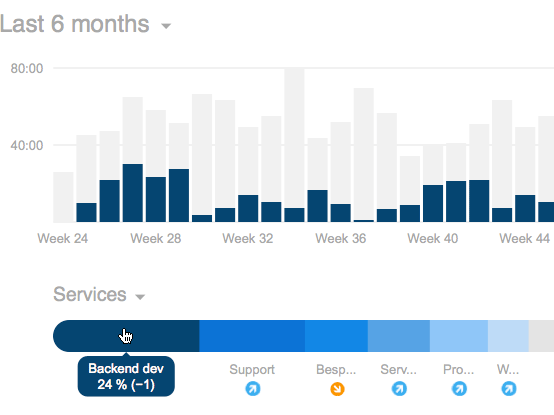July 2, 2012
Invoicing app smallinvoice integrates with mite
~~
Update: Since August 2024, smallinvoice does not offer this integration to new customers anymore. Existing customers can continue using the integration within smallinvoice.
~~
smallinvoice, a web-based invoicing and project management app made in Switzerland, now integrates with mite. You can import time entries tracked with mite, and convert them to an invoice with a few easy clicks. The integration is available in their advanced plan.

smallinvoice is the third invoicing app available in English that integrates with mite. Web-based SalesKing offers an import, and GrandTotal, a native Mac app, will be happy to convert your time entries as well.
Screencast
mite.integration with smallinvoice on Vimeo.
Features
smallinvoice handles time entries tracked with mite pretty flexibly. Filters and/or grouping options known from »Reports => Time entries« stand at your service in smallinvoice, too. Of course, you can add other service or product items to your invoicing items imported from mite.
Setup
smallinvoice talks to your mite.account via the mite.api, our open data interface. You’ll have to allow API access for your account first, so smallinvoice will be able to import your time entries properly. Click on your user name in the upper right-hand corner of mite to allow API access, and copy your API key.
Now head over to smallinvoice. There, click on »Configuration => Integration«, and choose mite. Enter your personal login URL and your mite API key.
Done! smallinvoice and mite now work as a team.
Thank you, smallinvoice
This new import feature was developed and will be taken care of by smallinvoice. Thanks a lot for your time and effort, Graem and team!
Julia in Add ons, New features
